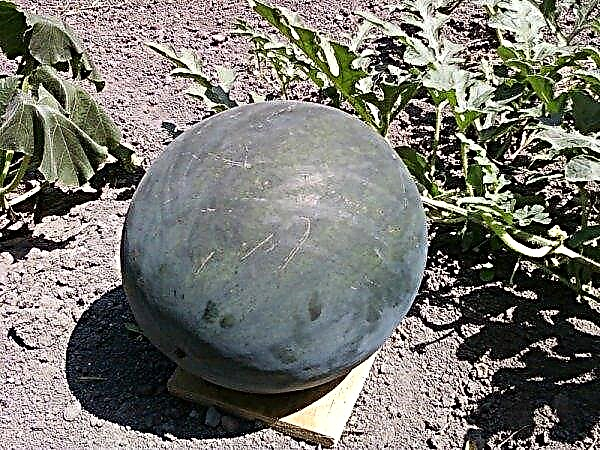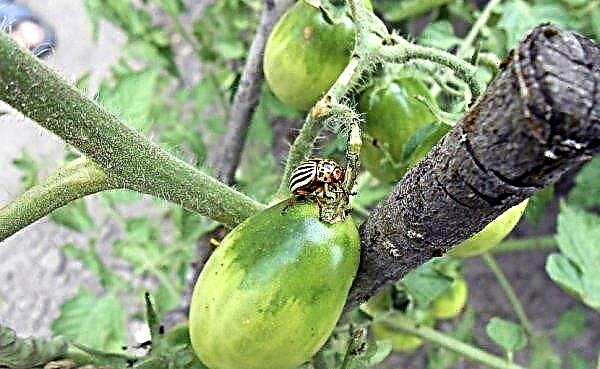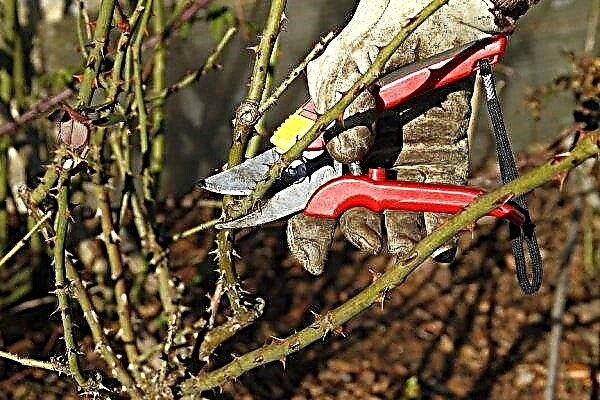More than 21 thousand species of bees are officially registered in the world, among which about 700 are carpenter bees, or xylops. They are distributed around the world, including the territory of steppe Europe, so they can often be found in Russia and Ukraine. What you should know about these insects, and what are their features - read this article.
Carpenter bee: description and characteristics of the breed
Bees of the species Xylocopa today in most countries fall into the list of insects that are on the verge of extinction. And all because in the course of human activity, significant areas of the steppe zones where carpenter bees live were destroyed. However, they can still be found in the wild.
Did you know? Insect carpenters are able to collect pollen even in bad weather, unlike other bees.
The characteristics of these insects include:
- activity from May to September (in a warm autumn, it is possible until October);
- endurance (in search of nectar, females can fly at distances up to 11 km);
- individuals of both sexes are excellent pollinators for plants;
- lack of aggression;
- they are considered to be single insects, while males usually acquire their own territory, where they live with 3-5 females.
What does a carpenter bee look like?
In appearance, such an insect resembles a bumblebee, but it does not have characteristic yellow marks. Xylop differs from other bees:
- rounded body, reaching 2-3 cm in length, and males are often smaller than females and have no sting;
- black body color;
- blue wings with a purple hue, the same tone markings can be on the head of the insect, which is why they are often confused with blue bumblebees;
- paws are covered with small hairs, thanks to which they collect a rich harvest of honey;
- dark antennae with a reddish tint.

Habitat
While xylops are found only in the wild, although beekeepers around the world do not stop trying to tame this breed, because these bees are excellent honey bees. They live in the steppe, arid zones of Europe, and they can also be found in the foothills of the Caucasus, where bees arrange their nests in hollows of dead trees or on dry roots. Sometimes families of carpenters settle down near a person, looking for cracks in rotten wooden structures (sheds, fences, etc.).
Important! These insects love a moderately warm climate, without sudden changes in temperature.
What do carpenter bees eat?
In terms of nutrition, these insects are no different from other bees: young individuals prefer plant pollen, and adults prefer honey and nectar. Xylops love to collect it from acacias, willows, fruit trees and flowers. Xylop saliva provokes fermentation due to microbes in its composition. Using this liquid, they turn pollen into bee bread, or bee bread - food for adult bees. And the special glands of young specimens turn the bee bread into royal jelly for feeding the larvae.
Xylop saliva provokes fermentation due to microbes in its composition. Using this liquid, they turn pollen into bee bread, or bee bread - food for adult bees. And the special glands of young specimens turn the bee bread into royal jelly for feeding the larvae.
Life cycle and features of reproduction
These insects got their name due to the characteristics of reproduction. In spring, females, using their powerful jaws, gnaw cells up to 1 cm in diameter in wood at various levels, and then deepen them to 25–30 cm. For this ability to build complex bee compositions inside the wood, they called it carpenters.
Did you know? During the creation of the nest, the xylophone female makes loud noises that can be heard for several meters.
Having prepared the cells, the uterus chooses 10–12 among them, which are sprinkled with pollen, and then leaves the egg there along with a piece of the nectar-based nutrient mixture. Having blocked the exit from the cell, the female proceeds to the next. After that, she guards the eggs for a while before leaving them. If the female successfully survives the winter, then the next year the cycle will be repeated again. From the laid eggs, the larvae hatch by the beginning of summer, from the autumn pupae feeding on the nectar left by them are already formed there. Already young bees hibernate in the cells, which, with the advent of spring, go outside, gnawing the partitions in the cells. Thus, different generations of insects can live in one nest.
From the laid eggs, the larvae hatch by the beginning of summer, from the autumn pupae feeding on the nectar left by them are already formed there. Already young bees hibernate in the cells, which, with the advent of spring, go outside, gnawing the partitions in the cells. Thus, different generations of insects can live in one nest.
Does a carpenter bee bite, and how dangerous is a bite
Xylops bite much more painfully than ordinary bees or wasps, and the consequences of their bites are much more dangerous for human health: together with the sting, insects inject poison into the wound, leaving painful swelling. Introduced poison inhibits the nervous system, provoking a shock state. That is why it is extremely important in this case to act promptly to reduce the likelihood of negative consequences.
Important! If such a bite falls on the throat, then this can lead to death.
To do this, you need:
- Carefully remove the sting from the wound without crushing it.
- After squeezing the poison out of the bite.
- Make a solution of ammonia in a ratio of 1: 5 with water, moisten gauze in it and attach it to the wound, after which the wound can be bandaged.

How to deal with Carpenter Bees
Xylops are rare insects that are on the verge of destruction, so even if they settled near human shelter, threatening the health of adults and children, destroying them is strongly discouraged. Instead, you can try other methods to get rid of unwanted neighbors.
Did you know? Xylopa has a high immunity, so it is not infected by bee mites, from which other bee varieties suffer.
In home
If the carpenters settled in the living room, then get rid of them is not difficult. The first step is to try to drive the bees out with noise. They really do not like him, so if you turn on music with good bass near their nest, then the insects themselves will leave the house as soon as possible. In the second case, boric acid or powdered pesticides, which are used to destroy wasp nests, come to the rescue. Some experienced beekeepers claim that in such situations, wood bee traps also show good efficiency.
Some experienced beekeepers claim that in such situations, wood bee traps also show good efficiency.
In the barn
If carpenters settled in non-residential premises, it is easiest to get rid of them with liquid fuels or aerosol cleaners designed for a carburetor. They simply fill the passages in the nest of insects. Thus, there is a risk of destroying an entire generation, but the rest will not create inconvenience in the future.
A carpenter bee is a valuable breed of honey plants and, if the beekeepers managed to tame it, this would be beneficial for the species in the first place, since it would help to preserve its population. Until this happens, the specialists have to study the features of these insects and try to save them in the wild.












